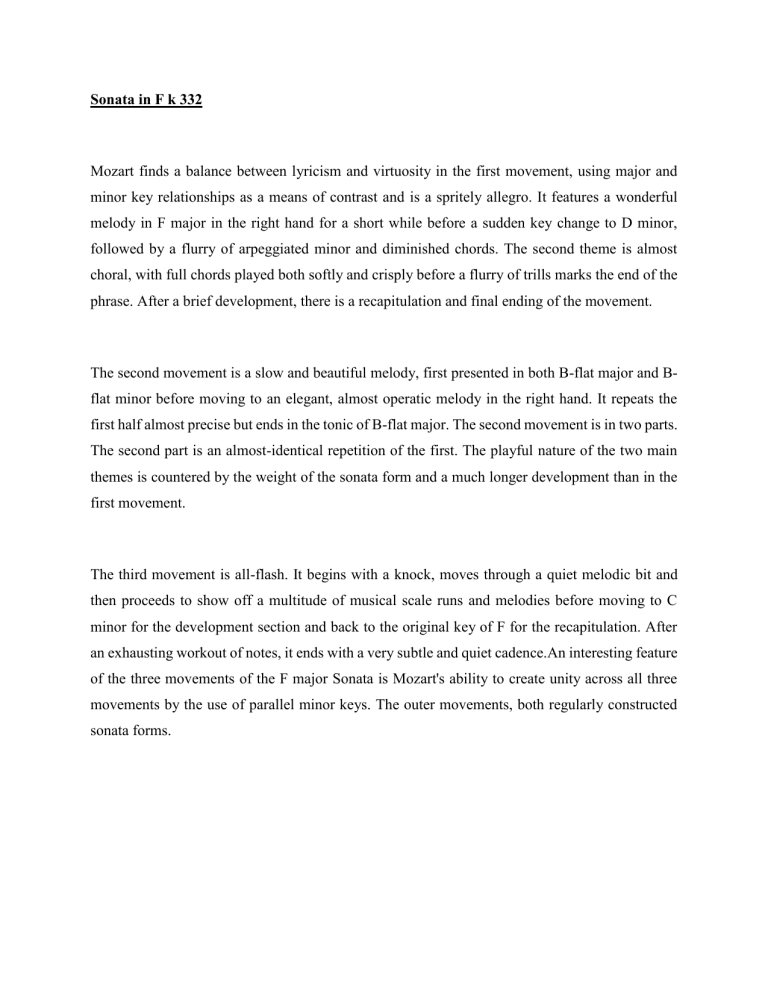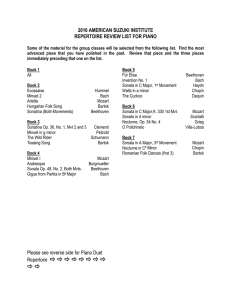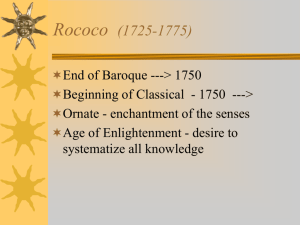
Sonata in F k 332 Mozart finds a balance between lyricism and virtuosity in the first movement, using major and minor key relationships as a means of contrast and is a spritely allegro. It features a wonderful melody in F major in the right hand for a short while before a sudden key change to D minor, followed by a flurry of arpeggiated minor and diminished chords. The second theme is almost choral, with full chords played both softly and crisply before a flurry of trills marks the end of the phrase. After a brief development, there is a recapitulation and final ending of the movement. The second movement is a slow and beautiful melody, first presented in both B-flat major and Bflat minor before moving to an elegant, almost operatic melody in the right hand. It repeats the first half almost precise but ends in the tonic of B-flat major. The second movement is in two parts. The second part is an almost-identical repetition of the first. The playful nature of the two main themes is countered by the weight of the sonata form and a much longer development than in the first movement. The third movement is all-flash. It begins with a knock, moves through a quiet melodic bit and then proceeds to show off a multitude of musical scale runs and melodies before moving to C minor for the development section and back to the original key of F for the recapitulation. After an exhausting workout of notes, it ends with a very subtle and quiet cadence.An interesting feature of the three movements of the F major Sonata is Mozart's ability to create unity across all three movements by the use of parallel minor keys. The outer movements, both regularly constructed sonata forms.


